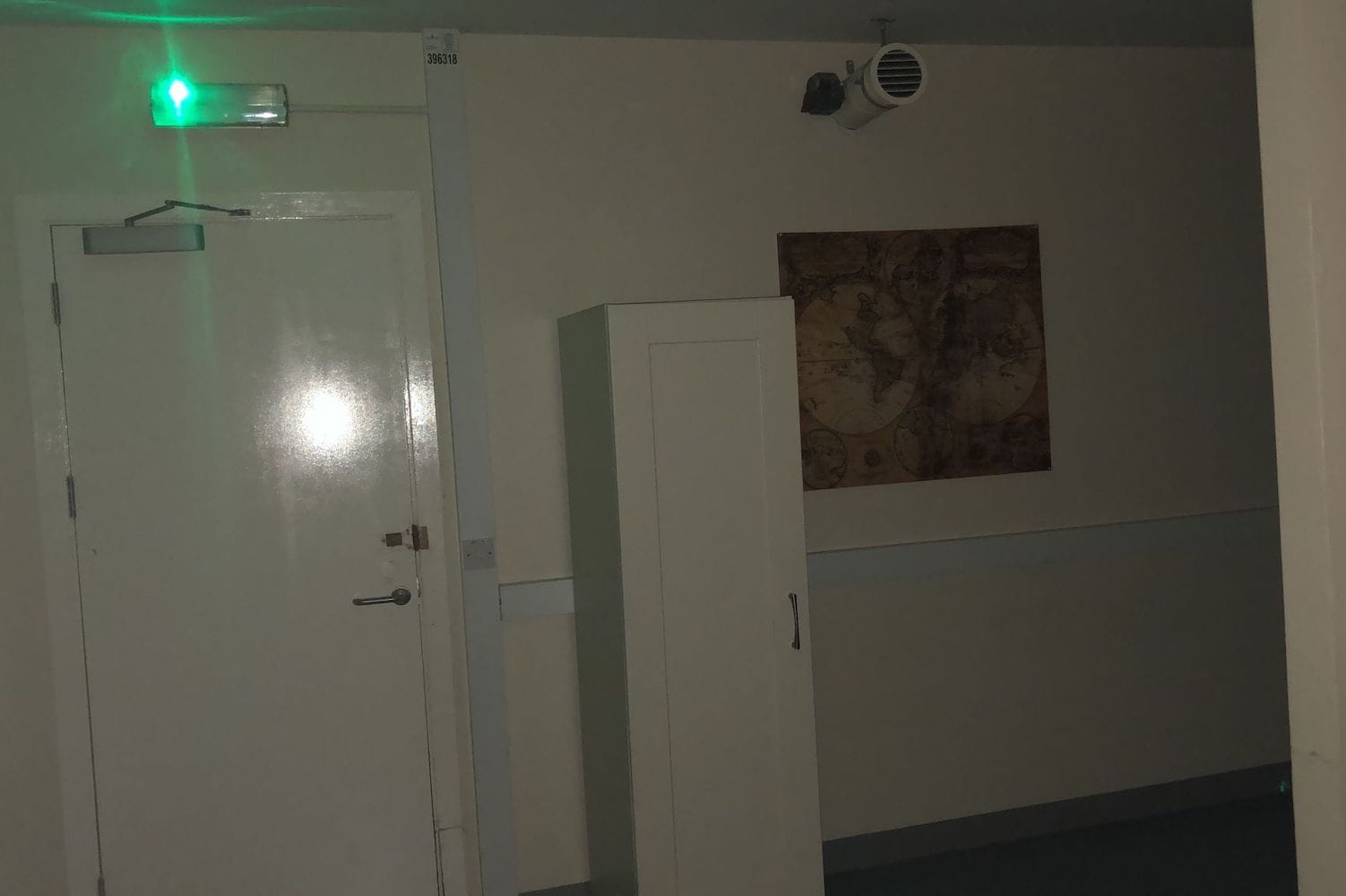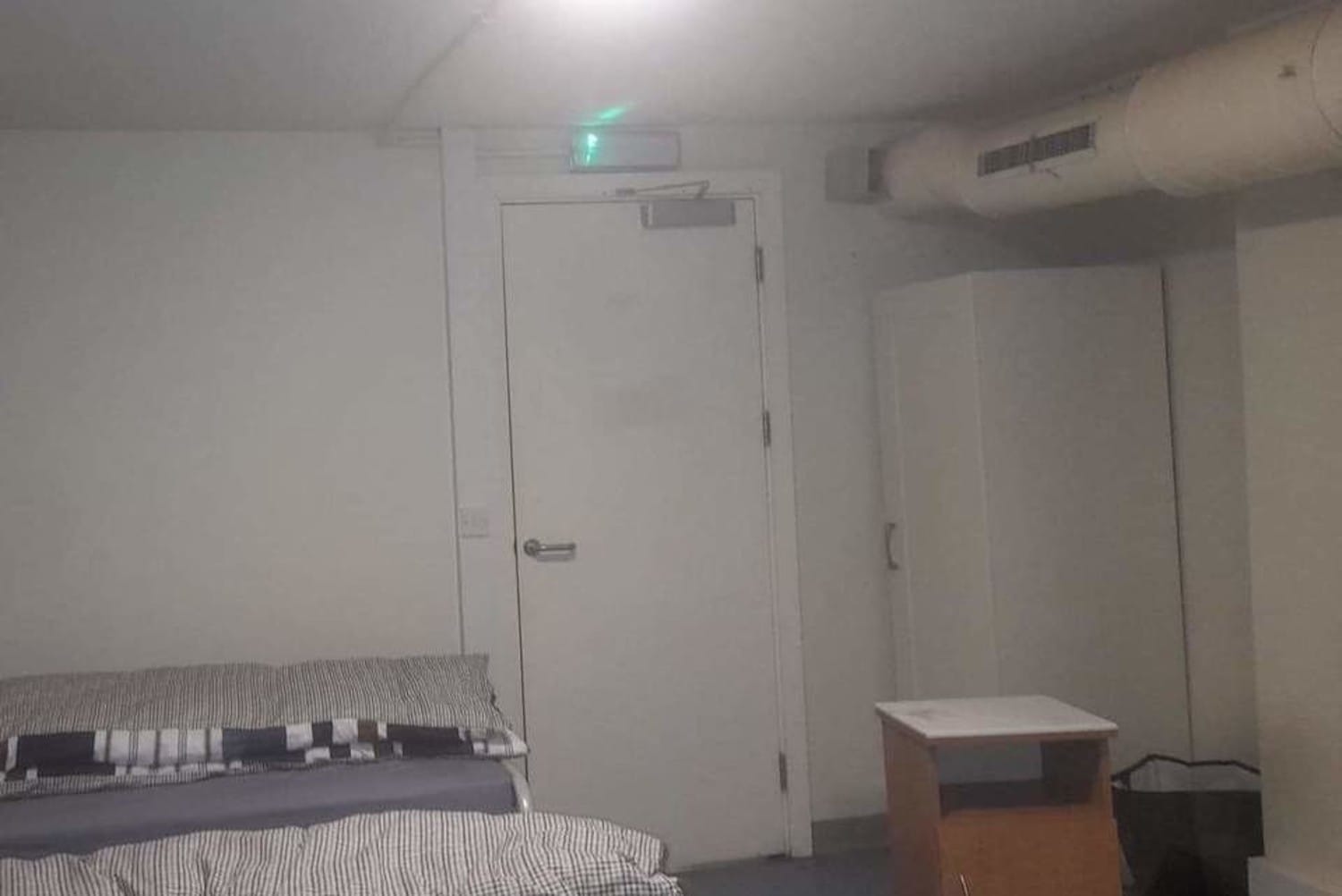Nobody caught illegally dumping yet by new north inner-city CCTV
But the scheme is a success, said a council official's report, as that shows the cameras are a deterrent.
“Ellis Quay is bad, really bad,” says Denise Jones. “It shouldn’t be open.”

In recent weeks, current and former residents at a homeless hostel in Smithfield have complained of a series of fire-safety concerns.
They pointed to a fire-alarm fault, missing signs explaining what to do if a blaze breaks out, and a lack of a fire-safety orientation when moving into the windowless bedrooms in the building.
Those concerns come following revelations of past breaches of fire-safety standards in other hostels funded by Dublin City Council and run by private companies.
A spokesperson for Dublin City Council says that the Ellis Quay hostel in Smithfield is safe and that it has a fire safety certificate granted in 2017.
The council has also applied for a new fire cert. “The new regularisations fire certificate application has been submitted to address layout alterations and capture cyclical maintenance,” says the spokesperson.
In autumn and winter last year, Denise Jones stayed in the hostel at 7 to 9 Ellis Quay, she says.
But she was never shown a fire escape, said Jones recently, or given details on how to evacuate if there was a fire.
She can’t remember a fire drill during the four months she was there, she says. A man still staying there now said the same, and that he hadn’t been shown any exit routes in case of fire.
Jones also said that in her bedroom in Ellis Quay there were no instruction posters for evacuation, the kind which are normally stuck on the insides of doors in hostels and hotels. Recent photos taken inside Ellis Quay show that that is still the case, in at least some of the rooms.
Some other hostels have fire drills once a fortnight, Jones says. “Ellis Quay was bad, really bad. It shouldn’t be open.”
Outside the Mendicity Institution on the other side of the Liffey on Friday 19 August, Jones and two other people said they had stayed in Ellis Quay at different times. All three said that they didn’t think there were sufficient exit routes if there was a fire.
The women’s section of the hostel is upstairs, says Jones. There are, on average, four people in each bedroom, she says. Beds were close together, while some people slept on “cot beds” in the living room, she said.
“I’ve been in loads of hostels and I’ve been homeless since I was 18. I’d rather sleep over there,” says Jones, pointing towards Bridgefoot Street Park across the road. “It would be safer and cleaner.”
A spokesperson for Dublin City Council says the female section of the hostel has fire escapes. “While operationally only one route is used via Benburb Street, in the event of an emergency there are 4 fire exits leading from female area in Ellis Quay,” she says.
“All residents have been informed of the whereabouts of all fire exits and names are noted in fire log book,” she says. “All new residents are given an induction upon arrival in building.”

A government guidance document on fire safety in hostels stipulates that “written instructions on the action to be taken by the occupants on the discovery of a fire or on hearing the fire alarm should be displayed in a prominent position in each dormitory, bedroom, kitchen and common room”.
These instructions should be multi-lingual as appropriate and should be accompanied by a simple floor plan showing the location of alternative storey exits, it says.
Photos taken inside Ellis Quay show that the hostel doesn’t have information on fire escapes displayed in all dormitories or bedrooms.
“There are maps showing fire escape routes, on the rear of bedrooms C2, C3, C4, C5, C9, and C10,” said the council spokesperson on 24 August. “There are none on C1, C6, C7, C8 and C11, following cyclical maintenance and new way-finder maps have been ordered.”
Dublin City Council has issued contradictory statements about how many rooms in Ellis Quay don’t have windows.
“I can confirm that no bedrooms have windows,” a council spokesperson said on 24 August.
Yet, in February last year, a spokesperson said: “There are windows in a large number of the bedrooms in Ellis Quay. A small number of rooms have no windows but there is a mechanical air vent system in situ.” They issued the same statement on 31 August this year too.
Residents frequently cite the fact that their bedrooms have no windows as driving their concerns about fire safety.

In the early hours of Tuesday 16 August, the fire alarm at Ellis Quay signalled a fault.
Photos from 17 August and 18 August show that the fire alarm panel still showed a fault for more than 48 hours afterwards. It was fixed on 18 August, according a resident.
The fault was caused by a burst pipe in the female bathroom, which leaked into the male bathroom below, said the spokesperson.
“Some of the water came through the sounder in the male bathroom and this triggered an alarm fault on the fire panel,” says the council spokesperson.
A Dublin City Council plumber fixed the pipe, he says, but the fire alarm panel still showed a fault.
“The fire alarm system was fully functioning while the contractor sourced and replaced the damaged head, due to the water flooding,” says the spokesperson.
Last December, a schedule of records showing 23 emails sent between November 2020 and February 2021 that related to fire safety at Ellis Quay was released by Dublin City Council in response to a request under the Freedom of Information Act for records showing reasons for fire-safety enforcement action at homeless hostels by Dublin Fire Brigade.
However, the council refused to release the actual emails, saying they contained information that was commercially sensitive, and personal information, among other reasons.